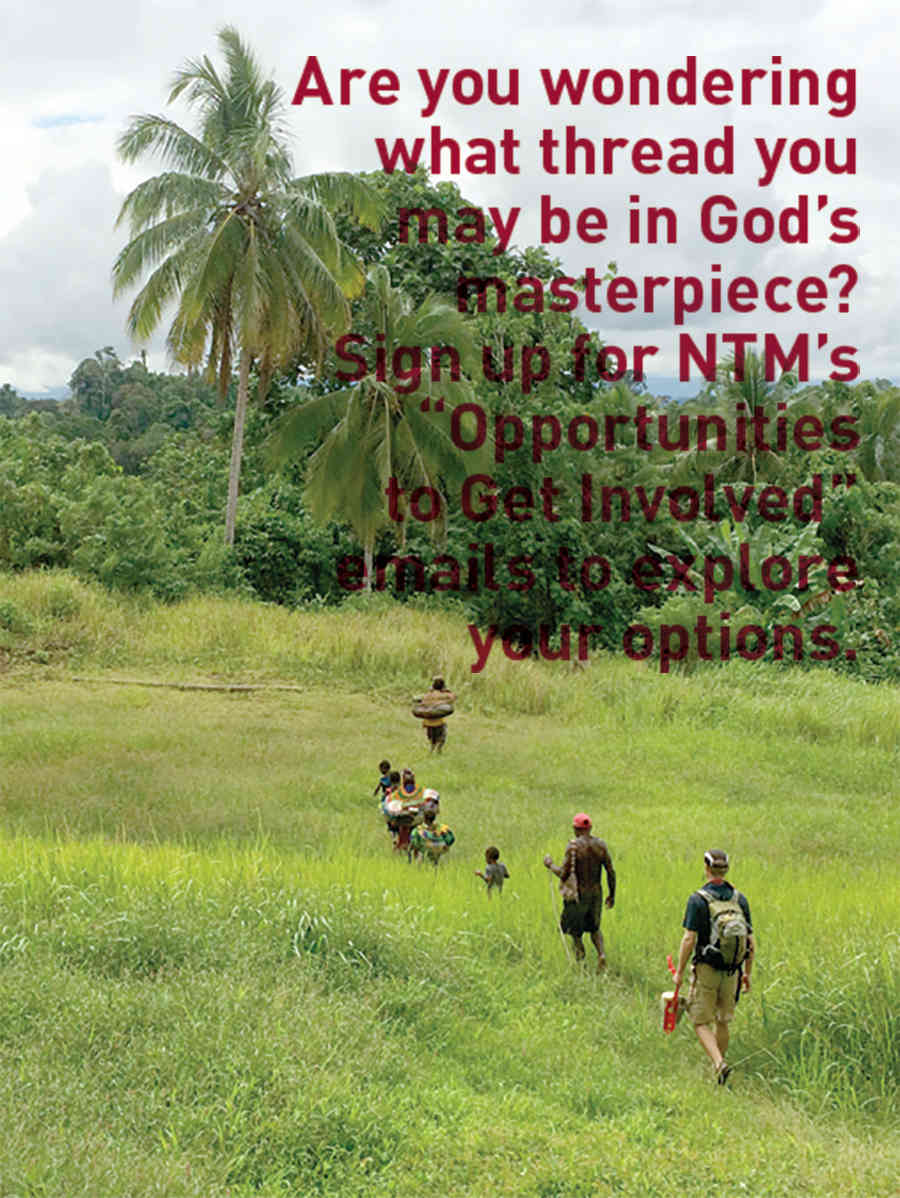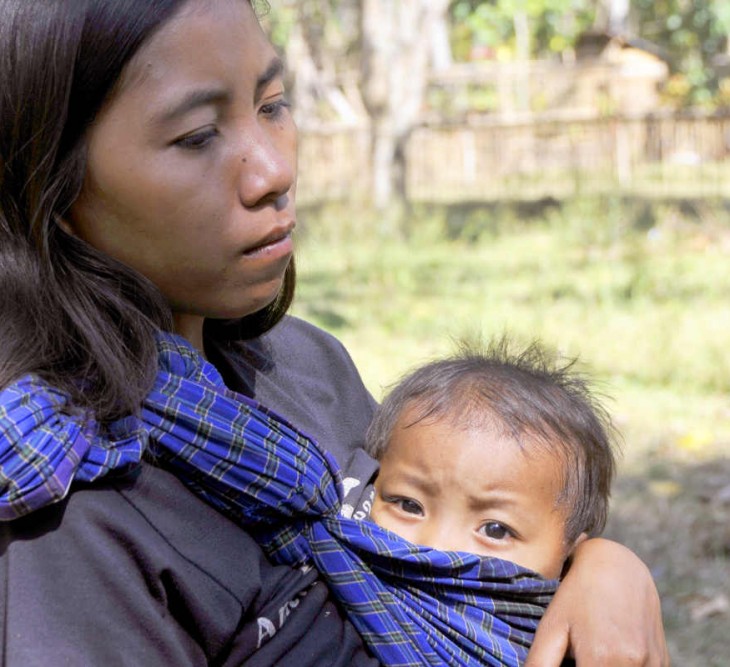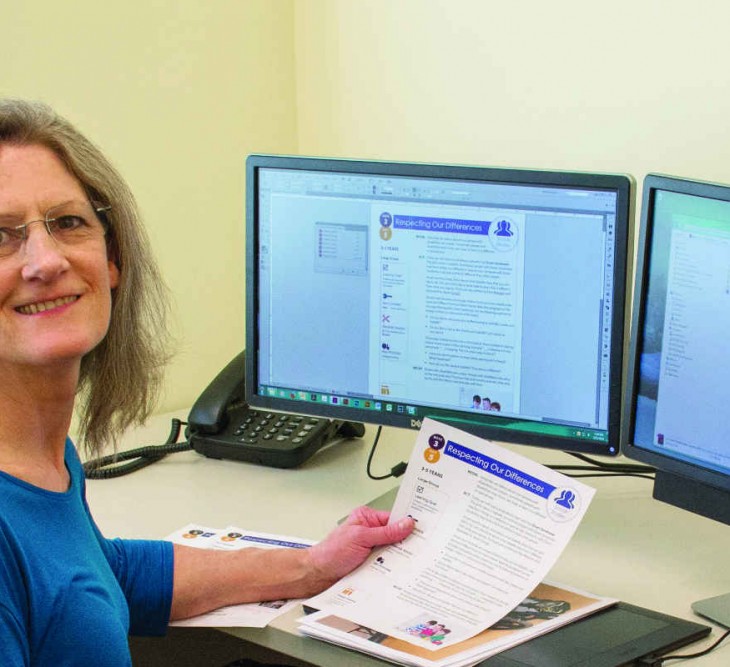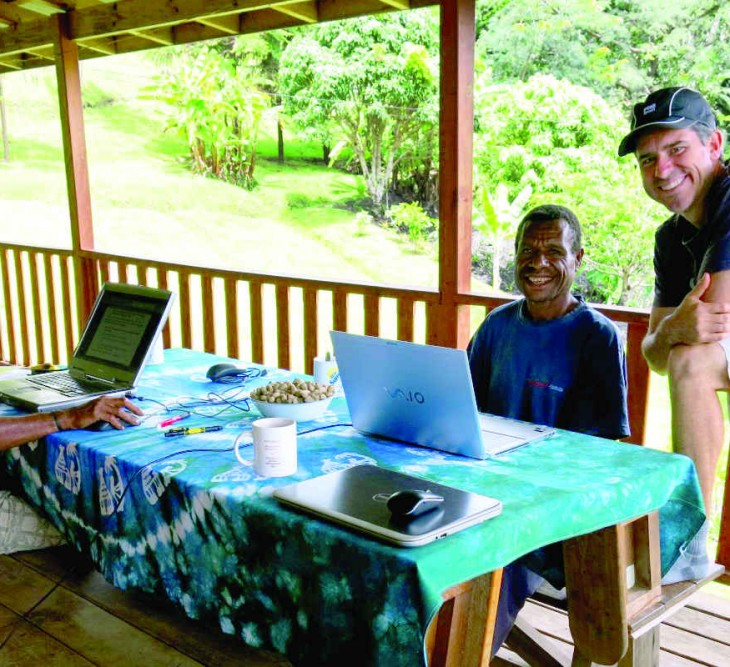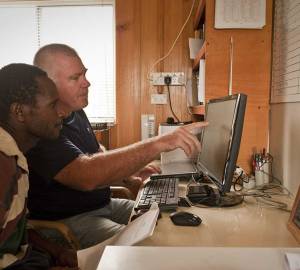Best Neighbors Ever
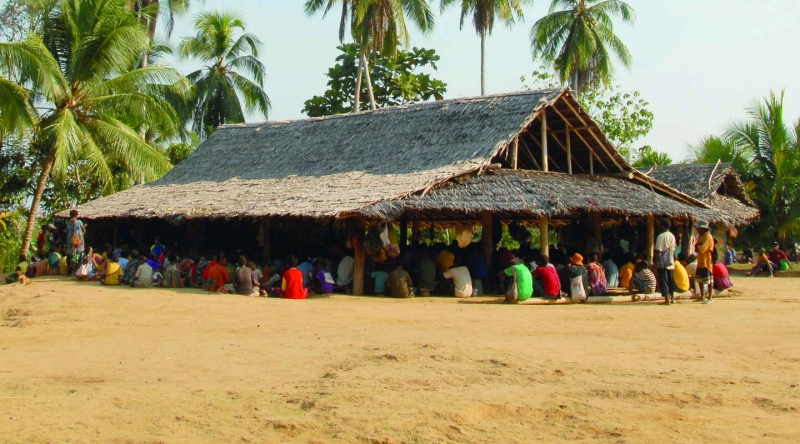
MISSIONARIES HELP THE INAPANG PEOPLE PASS ON THE GIFT OF ETERNAL LIFE
A hearty cry burst from the lungs of the newborn baby boy, bringing a smile to the many women present. Ellen, a still somewhat new Tangguat bride, embraced the moment, listening to her firstborn making such a ruckus. Her Inapang husband would be pleased at the birth of a healthy son.
For decades the Tangguat and Inapang people groups crossed cultural and linguistic barriers in intermarriage, creating a tight social network between their distinct language groups. And their son, like many others sons and daughters, would continue to bind their two people groups together.
Tiffany Lanier, a new missionary, watched the scene in amazement. On a two-month orientation visit to the Inapang village, this was the first birth she had attended. She marveled at how the women handled the birthing process. But joy over the birth of a healthy newborn soon turned to deep concern for the new mom. The placenta refused to follow and within several hours Ellen’s body began to go into shock. Her life was on the line and there was no ER down the street. There was not even a street.
By God’s grace, the placenta eventually was delivered and Ellen survived. Afterward, a friendship began to grow between Ellen and Tiffany. Neither knew where this friendship would lead, nor the special way God was linking their lives. It was a smaller picture of what God was doing among the Tangguat and Inapang people groups. Though bonded together through intermarriage, each group still walked its own path, unaware that their eternal destinies were linked to one another.
THE INAPANGS MEET JESUS
The story of the Tangguat people is intricately woven into the backstory of what God first did among their Inapang neighbors. It began in 2003, when Bill and Kelley Housley, Daniel and Elizabeth Moore, and Will and Mindy Zeigler moved to an Inapang village on the border of Tangguat territory.
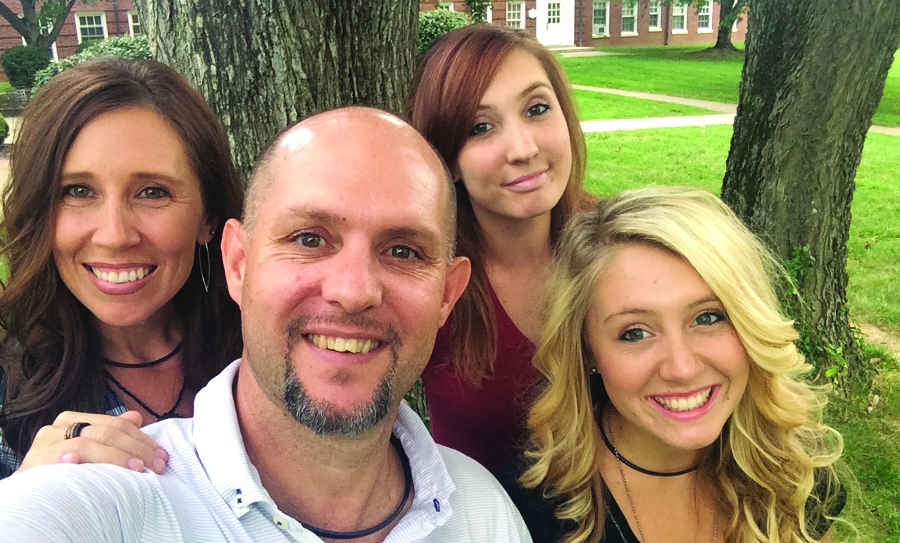
The Housley family
The missionaries immersed themselves in two years of intense culture and language study, followed by another two years of translating Scripture passages and Bible lessons into the Inapang language. By 2006, Matthias and Petra Mueller had joined the team.
And then the day came. In 2007, evangelistic teaching began.
Three days into the teaching, evidence surfaced that the message was penetrating the hearts of the Inapang people. “We have been hearing pieces of this story for years in the national language,” one man said, “but today … we are really hearing it in our stomachs [hearing it well] and we are wondering, ‘What kind of person is this God? We don’t know anything like this.’”
Another man said, “We men are always looking around and saying this land is mine and this thing or that thing is mine. Now we are hearing God’s Talk and we are saying to each other, ‘It’s true. God made those things. They are His.’”
Over the course of four months, as the Inapang people listened to truths from God’s Word, they began to wonder how things could be made right between them and a holy God. When the lessons culminated with Jesus’ death, burial and resurrection, they grasped the significance and understood the story of redemption. Many professed faith in Christ. The first Inapang church was born.
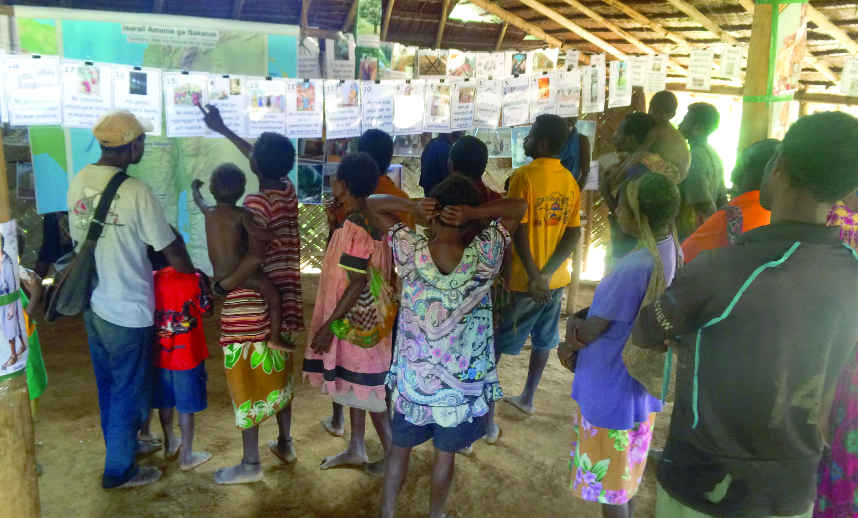
“I should go to the place of fire for my sin,” said one teenager, “but I am not going to because Jesus came and died for my sin. When I die, I am going to go to God.”
“When He died, He died for all my sin!” said an Inapang man. “The sins we already did, the sins we will do later, He knew them all and He paid the price.”
After listening to testimony after testimony, Daniel and Elizabeth Moore wrote, “It was one of the most exciting days of our lives. To hear so many testify of their faith in Christ made all the trials and difficulties worthwhile.”
But that was only the beginning.
“WHAT ABOUT OUR NEIGHBORS?”
“When the first church was born among the Inapangs, some of the strongest believers were bilinguals who had families in the neighboring Tangguat village,” wrote Bill Housley. “Now that they had seen this good news change their lives and devour their biggest fears, they were anxious for their families back in Tangguat to hear it too. They came and asked us repeatedly if we would turn this amazing talk into the language of Tangguat and write Bible curriculum for them so that they could go back and tell their families.”
The logistics were overwhelming. The missionaries had an infant Inapang church to nurture and care for, Bible translation yet to complete, and nine unreached Inapang villages. When would they ever find time to learn another language? But the requests kept coming.
“We wrote up a proposal for the work among the Tangguats to be opened with minimal missionary assistance,” wrote the Housleys. The Inapang believers would make up the majority of the team. “We believed that the same Holy Spirit who was working in and through us would be faithful to do the same with our Inapang brothers and sisters.”
Exciting as it was, Bill and Kelley recognized that their proposal meant someone had to be willing to work outside the box. But who would do it? And when? “It would take a very special kind of person to work alongside of this small group of believers, to strengthen and encourage them, and let them lead this cross-cultural outreach into a new language group. But we believed that God would bring along help in His time.”
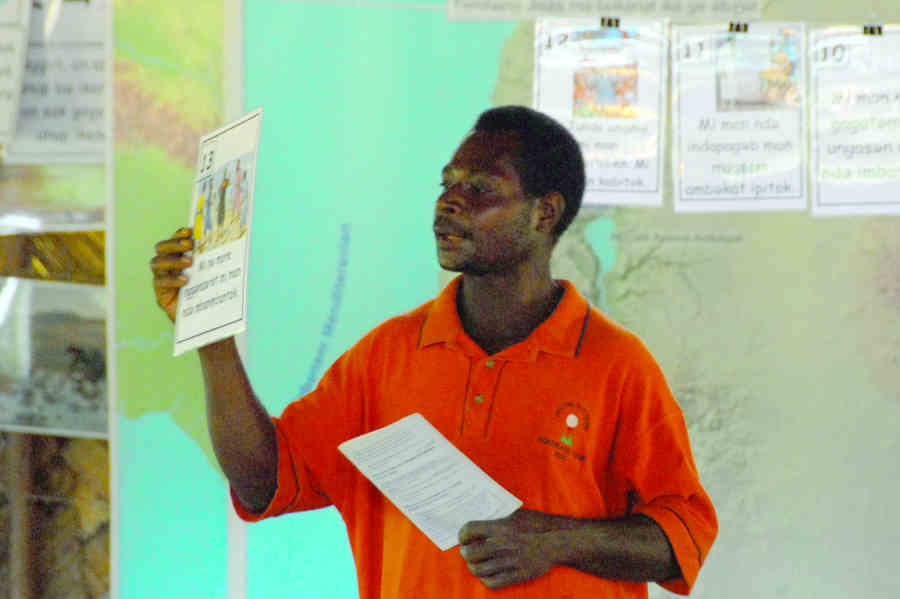
In the meantime, there was work to be done. Working alongside the fledgling Inapang church, the missionaries launched an outreach to the neighboring Inapang village, which in turn took part in reaching the Inapang village beyond their borders. A leapfrog pattern of discipleship continued, until today nine of the 10 villages that make up this language group of 4,000-plus people have heard a clear presentation of the gospel in their own language.
But neither the missionaries nor the Inapang church ever forgot the need of evangelizing their Tangguat neighbors. And neither had God.
GOD HAD AN ANSWER
Behind the scenes, God was weaving threads together as He prepared His not-yet-unveiled masterpiece. When Tim and Tiffany Lanier stepped off the plane in Papua New Guinea in 2009, the thread of their lives was already inserted into the tapestry.
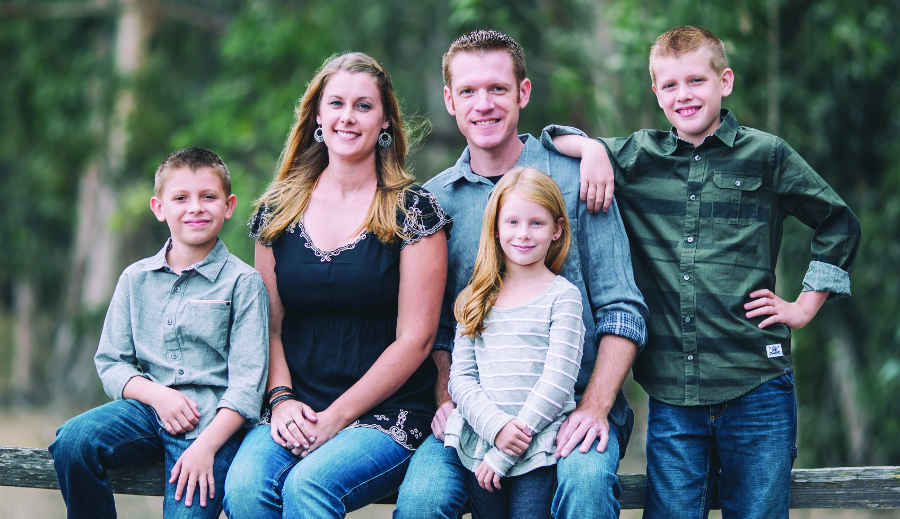
The Lanier family
“As part of our training and orientation, we were sent to an Inapang village in the swampy lowlands to live, learn and observe life and ministry for two months. We didn’t know anything about the place, the people or the missionaries. We had no idea that God was throwing us right into the middle of a giant web He was weaving there in His plan to prepare for Himself a bride among these people.”
The day after the Laniers arrived, yet another delegation of Tangguats came pleading for missionaries to teach in their village. But this time new missionaries “just happened” to be spending two months in the village. New missionaries who weren’t yet scheduled to go anywhere in particular. New missionaries who were looking for a place to serve.
“As we and our Inapang brothers and sisters helped the Laniers finish out their national language study, something amazing began to happen,” wrote the Housleys. “We all fell in love with this sweet family. We, along with the Inapangs, began praying that the Lord would bring the Laniers back to help them reach the Tangguats.”
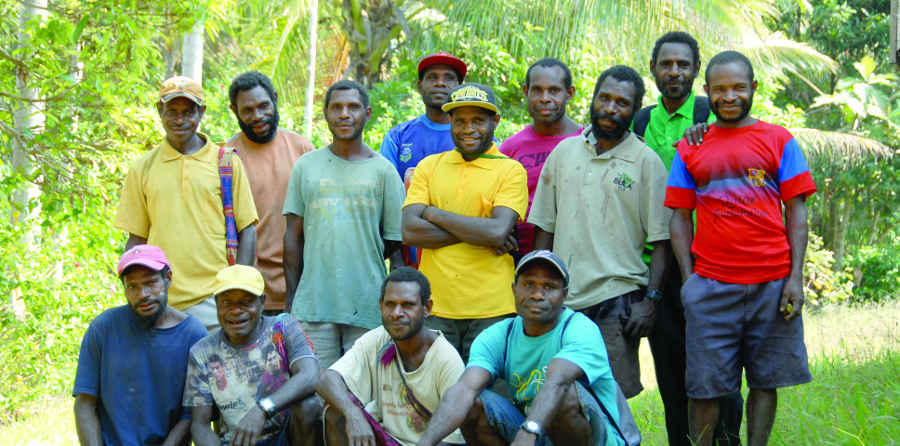 Inapang church leaders
Inapang church leaders
God was also working in the hearts of the Laniers. “We heard over and over again their urgent desire to take the gospel to the Tangguat people,” wrote Tim and Tiffany. “They would tell us, ‘Our family is dying and going to the place of fire! We have to go tell them. But we can’t do it by ourselves. We need help. … We can do the literacy teaching. We can do the Bible teaching. We’ve done it all in our own villages. But we can’t do the translation. We need help to translate God’s Word into the Tangguat language.’
“As the weeks went on, the Lord impressed on us the incredible opportunity He was laying before us. We could assist the indigenous church in a way that would promote their continued maturing, while further equipping them for ministry in a way not possible otherwise.
“At the time, there were logistical barriers that seemed prohibitive. If this was going to happen, we would have to take the church planting and ministry model we had been taught, and fit it into a very different context. We would be learning language and culture from bilingual Tangguat believers in the Inapang village so as to be working under the Inapang church…. But aside from those mountains in our road, the Lord seemed to be encouraging us that way. So we continued to pray.”
MUCH TO PRAY ABOUT
The two months passed quickly. The Laniers left with much on their minds and much to pray about. The Inapang church prayed for their return.
Back in town, the Laniers watched God remove all the obstacles and open the way for them to partner with the Inapang church. It was an exciting day when the Laniers made a return visit to share their exciting news with the Inapang believers.
“We’ve seen your desire to take the gospel to the Tangguat people,” the Laniers told them. “We’ve heard your stories. You’ve told us you are able and ready to teach literacy, to teach the Bible, but you need help with translating the Bible into their language. We want to help you do that.”
A partnership was born.
KEEPING THE INAPANGS AS THE “FACE”
“We purposefully chose ... to live and minister from the neighboring Inapang village,” the Laniers explained. “One of the primary reasons was that we hoped to remove the missionary as the ‘face’ of this work, so that it would be a work of the Inapang church. We hoped that it would create an interdependency between the Inapang church and the future Tangguat church from the beginning.”
This meant that the Laniers, and later Promise Vaughan when she joined the team, primarily worked with Tangguat-speaking believers in the Inapang village to learn the culture and language of the Tangguat people. Remember Tiffany’s friend Ellen from the beginning of the story? She was one of those Tangguat-speaking believers.
“When we moved into Inapang to start our ministry to the Tangguat people, Ellen was right at the forefront ready to help and be a part of taking the gospel to her own people,” Tiffany shared. “She worked faithfully and tirelessly teaching me the Tangguat language and then later teaching Promise as well.”
Though learning the Tangguat culture and language in the Inapang village introduced challenges for the missionaries, it kept them focused on partnering with the Inapang church — and kept the Inapang church directly involved with the missionaries and the subsequent outreach from day one.
LITERACY: AN ESSENTIAL COMPONENT
This partnership was highlighted at the introduction of the Tangguat literacy program. In just under a week, Tangguat-speaking believers in the Inapang village wrote more than 100 stories. The missionaries entered the stories into the computer and created four primers, four graded readers, and multiple post-literacy reading books from the stories provided.
And then it was back into the hands of the Inapang church. The Inapang church began Tangguat literacy classes with the new materials. After the first class, new Tangguat readers co-taught the classes that followed, until eventually the students became the sole teachers.
CURRICULUM DEVELOPMENT
Their partnership carried through to curriculum development. Since the Inapang Bible teachers had never been involved in curriculum development, it would have been far easier for the missionaries to just “get it done.” They could have outlined the lessons, translated them, and handed them over to the Inapang church as a great resource for teaching their Tangguat neighbors.
But this was a partnership. And both the missionaries and the Inapangs were invested in the process.
“We started small and worked with them to outline the lessons. At the beginning, even this seemed like a monumental task,” shared Tim Lanier. “I would teach them some concepts and … see them worked out. Then they would turn around and teach the concepts to the other guys working on writing the lessons. This further cemented in their minds what they were doing.”
The missionaries led the way through the process, but left oversight of the six to 10 men who were developing content for the lessons to a couple of bilingual Inapang Bible teachers.
“All 75 lessons were written by hand,” Tim said. “Then Tiffany and Promise typed them into the computer. Each lesson went through several stages of proofing by the Inapang Bible teachers. They labored intently for a year and a half before the lessons were completed.”
A DATE IS SET
Some days just stand out in your mind — like that Saturday morning when the Inapang church stepped into their leadership role. The missionaries sat back as the Inapang church decided that the teaching should begin on April 27, 2015. They watched on as the Inapang church chose the teaching teams and independently determined to meet in advance to practice and become familiar with the lessons.
“I could see the reins passing from myself to the church and the church leadership as they took the lead on when and how this was all going to happen,” Tim shared. “It was both nerve-wracking and exciting all at the same time.”
With the date set, the excitement was now palpable.
“This was not just to be a Bible class,” Tim explained, “but a journey through the Bible with the intention to use God’s Word to dislodge the old animistic beliefs and way of understanding the world around them, and replace it with a biblical understanding.”
FOUNDATIONAL BIBLE TEACHING
Each week, the Inapangs made the two-plus hour hike through the swamp to spend the week with the Tangguat people. It wasn’t an easy hike or an easy task. Tangguat was the mother tongue for some of the Bible teachers, but not for all of them. The hard work and fear of speaking in another language made some of the Bible teachers shake from nerves. But they stood up, trusted God and taught anyway. And He proved faithful.
“I rejoiced as I walked through the village those first afternoons,” Tim shared. “Everywhere I went I saw Inapang believers, both men and women, sitting with the Tangguat people reviewing the lessons and answering questions. It was so exciting to see them eager to pass on these great truths and stepping across language and culture barriers with His Word.”
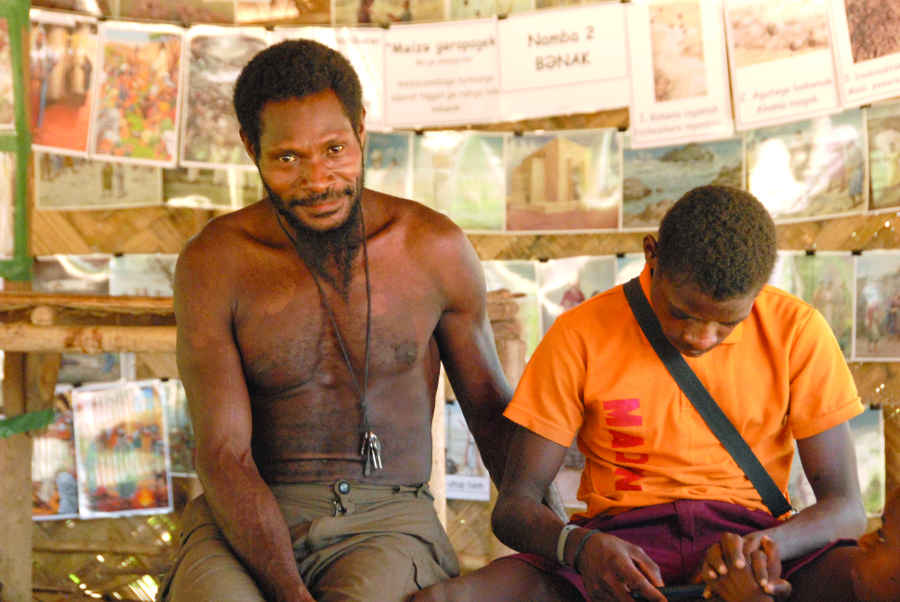
It was early in the teaching when Anton, one of the bilingual Bible teachers, reported, “This week the Tangguats heard the story … of the fall of man. When they heard … how [Satan] desired to destroy Adam and Eve, the Tangguats were angry and said, ‘What Satan did to Adam and Eve then, he still does to us now!’ What is truly amazing is that, without yet having the explicit teaching on sin and God’s holy standards, they are already seeing themselves as descendants of Adam in a completely hopeless situation with their sin.”
Later, as the Tangguats heard of the Flood and the destruction of the cities of Sodom and Gomorrah, they repeatedly asked, “How can we remove our sin? We are just like those people that God destroyed!”
What a heart-breaking place to be! But that was exactly where the Tangguats needed to be. People must first recognize they are lost before they can be saved.
With the birth of John the Baptist, the Tangguats saw a glimmer of hope. It was clear to them that John the Baptist was the one God said would prepare the way for the promised Redeemer. “They were hearing that … the One that God said would rescue them was coming,” Tim wrote.
They eagerly listened as they were taught about the early days of Jesus’ ministry. And they were getting it. “Jesus is our Deliverer!” they exclaimed. “God is going to save us! But how is He going to do it?”
Then came the rest of the story. After hearing that God Himself gave His life as the perfect sacrifice for the sins of mankind, they finally understood the “how” — and responded in faith. Testimonies flooded in.
“There is nothing we can do to bring ourselves back to God. It is God alone! Jesus came and died for our sins and it is only because of Him that we can come to God,” Tresia said with a glow on her face.
“Jesus is the one door to God. His blood was shed for us. … He has completely erased all our sin,” shared Jon.
Another man said, “He did this for us freely! He had no debt with us and yet He did this completely on His own for us. He should not have done it. We were sinners and did not deserve it and yet He did!”
One after another, the testimonies kept coming.
TWO-PART BLESSING
“A really neat aspect of this church plant is that it has two sides that we get to take part in,” wrote the Laniers. “One being the Tangguat people hearing the truths of God’s Word and His redemptive story. The other is seeing the Inapang church grow and thrive as they step across linguistic and cultural barriers to take God’s Word to their neighbors.”
For the missionaries, it never grew old to hear the Inapang believers exclaiming, “Now the Inapang and Tangguat believers are one family!”
Intermarriage wove a familial connection between these two people groups, but the power of the gospel made them brothers and sisters in Christ. And two of these sisters, missionary Tiffany Lanier and Tangguat believer Ellen — their own relationship foreshadowing a much larger one to come — have watched with joy at what God has done.
THE VALUE OF YIELDED LIVES
“Not only has the Lord birthed a church among the Tangguat people, but He has shown His church [the Inapang church] here in this valley that there is nothing He cannot do with men and women who are yielded to Himself,” wrote the Laniers. “ Who knows what the Lord has in store for His small band of believers in this remote part of the jungle. For now, though, they have their work cut out for them as they begin to nurture and disciple this brand-new church in the Tangguat area.”
God works through lives that are yielded to Him to do whatever He asks. In this case we have both the missionaries and the Inapang church yielded and willing to serve. The missionaries were willing to take the “back seat” and partner with indigenous believers, guiding them through the proven NTM process of evangelizing and establishing new churches. And the Inapang church was ready to take the gospel beyond their border and comfort zone.
As God weaves the tapestry of our lives, there are many threads. Some appear as shiny gold strands, while others a dull gray in the background. Yet all the threads, interwoven together, are essential to create God’s masterpiece.
There are still unreached people groups who don’t even know it, but they are waiting for their eternal destinies to be intertwined with those willing to bring them the gospel message. They are waiting for their destinies to be intertwined with prayer and financial partners who will send those willing messengers of the gospel. Will we yield the threads of our lives to God to be interwoven into His masterpiece as He sees best? It doesn’t get better than that.

